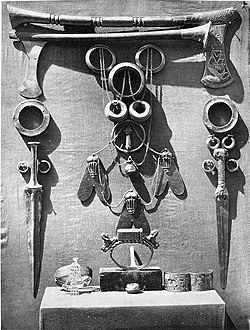| Ahhotep II | ||||
|---|---|---|---|---|
| Queen consort of Egypt Great Royal Wife | ||||
 Queen Ahhotep II's coffin from Dra' Abu el-Naga' | ||||
| Burial | Thebes? | |||
| Spouse | Kamose (likely) | |||
| Issue | Sitkamose | |||
| Egyptian name | ||||
| Dynasty | 17th Dynasty | |||
| Religion | Ancient Egyptian religion | |||
Ahhotep II was an ancient Egyptian queen, and likely the Great Royal Wife of Pharaoh Kamose. [1]






